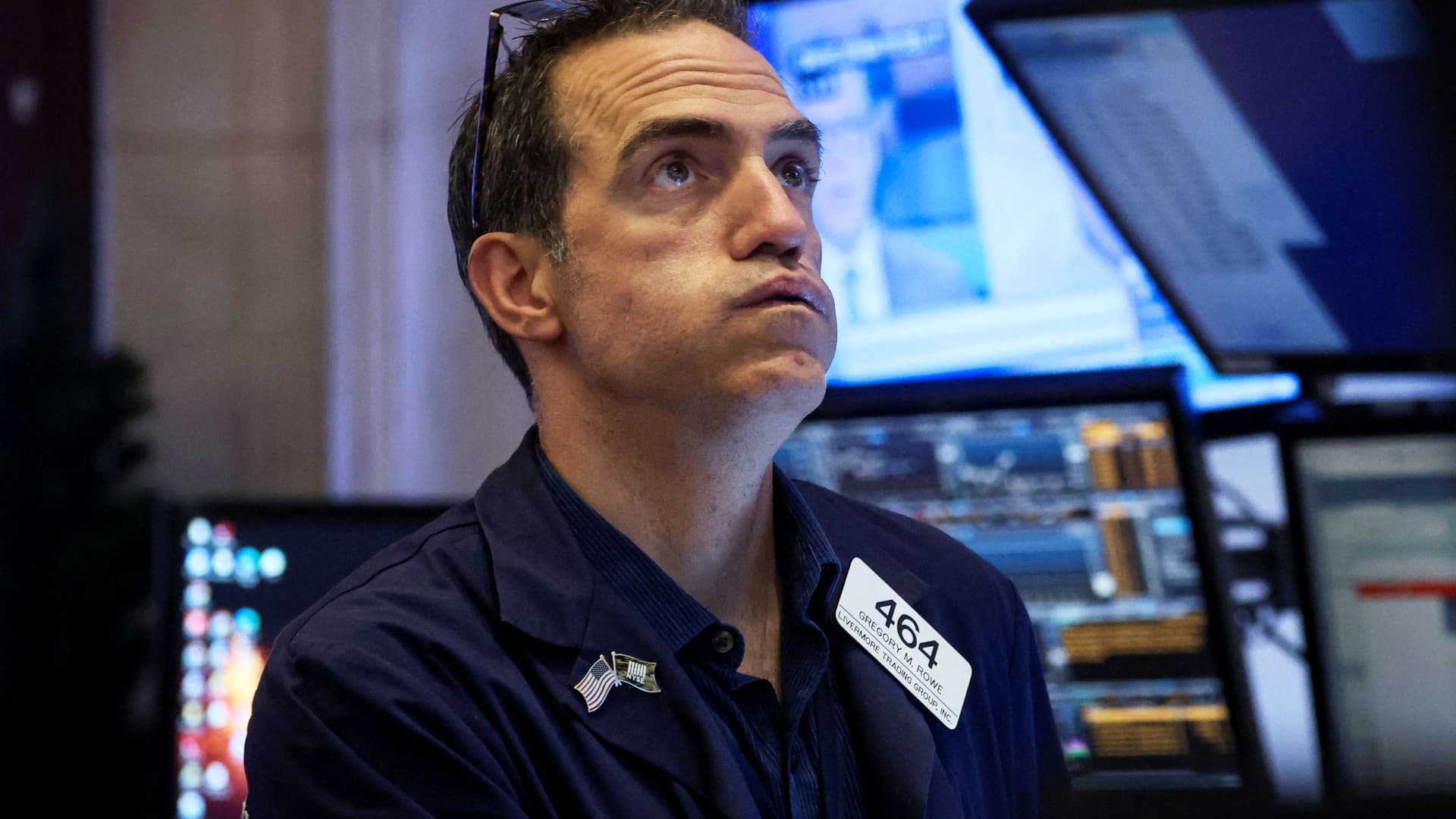
A trader works on the floor of the New York Stock Exchange (NYSE) in New York City, June 1, 2022.
Brendan McDermid | Reuters
LONDON — Global stock markets are falling sharply after May’s U.S. inflation print reignited fears that central banks will be forced into aggressive monetary policy tightening.
Friday’s highly-anticipated consumer price index report came in hotter than expected at 8.6% annually, resurfacing market concerns that action from the Federal Reserve and other central banks could risk tipping the economy into recession.
Major averages in the U.S. closed out their biggest weekly declines since January on Friday, and futures point to further losses on Wall Street when the opening bell sounds on Monday.
Shares in Asia-Pacific plunged on Monday, with Hong Kong’s Hang Seng index, Japan’s Nikkei 225 and South Korea’s Kospi all falling more than 3%. European stocks also tumbled in early trade, with the pan-European Stoxx 600 shedding 2% as a sea of red swept through global risk assets.
Meanwhile, the U.S. 2-year Treasury rate hit its highest level since 2007 on Monday morning and edged closer to an inversion with the benchmark 10-year rate – seen by many as a sign of an impending recession.
‘Punch in the gut’
Central to the adverse market reaction to Friday’s CPI reading is the fear that inflation expectations have broadened and become entrenched, beyond the well-documented ephemeral drivers such as supply chain bottlenecks and energy shocks.
“I do think that the probability of falling into a bear market and indeed a recession has undeniably increased as a result of Friday’s punch in the gut, in a way,” Fahad Kamal, chief investment officer at Kleinwort Hambros, told CNBC on Monday.
Kamal added that there was “very, very little good” in Friday’s inflation report, which he said indicated that inflation has not peaked and has instead broadened throughout the economy.
“It’s talked about less in the sex and violence of oil and commodity prices and other things, but actually, rent is very sticky and it’s a huge part of the index. There seems to be upward momentum there as well, implying that inflation is going to be with us higher and longer than we expected even last week,” he said.
Richard Kelly, head of global strategy at TD Securities, told CNBC Monday that both the bond and stock markets were now signalling that a recession is coming down the pike, most probably in the fourth quarter of 2022 and first quarter of 2023.
“Overall, if you look at equity markets, they’re telling you the ISM (U.S. economic activity index) probably falls to 50 or sub-50 over the next two to three months, and in part this is what the Fed and central banks have to do to get inflation back under control,” Kelly said.
The 50 mark separates expansion from contraction in a purchasing managers’ index reading, a reliable gauge of economic activity.
“While (the Fed) can’t sit there and say their job is to end job creation for the moment, that is basically what they need to do if they are going to get inflation back under control now,” Kelly added.
All eyes on the central banks
The coming week will be pivotal in the battle against soaring inflation for global central banks and markets.
Federal Reserve officials will meet on Tuesday and Wednesday to discuss their next monetary policy move. The Federal Open Market Committee is widely expected to announce at least a 50-basis-point hike on Wednesday, having already raised rates twice this year, though market bets for a 75 basis point hike have risen in light of Friday’s CPI figure.
The Bank of England’s Monetary Policy Committee will announce its latest interest rate decision on Thursday, while the Bank of Japan, Swiss National Bank and Brazil’s BCB also meet this week.
Investors will also be digesting a slew of economic activity data, including Chinese industrial production and retail sales, U.K. industrial production, employment and retail sales, and U.S. producer price inflation, retail sales and industrial production.
U.K. GDP shrank by 0.3% month-on-month in April, official figures showed Monday, falling short of economist expectations for a 0.1% expansion and furthering fears of an economic slowdown ahead of the Bank of England’s Thursday decision.
“In broad terms, the run of data will be combed for recessionary signals, with the added irony that any signs of activity strength are likely to be a case of ‘good news’ being bad (i.e. putting further upward pressure on rate expectations), while the pressure on central banks is to retain some semblance of control over rate trajectory narratives, despite having been proved hopelessly wrong on inflation,” said Marc Ostwald, chief economist and global strategist at ADM Investor Services International.






